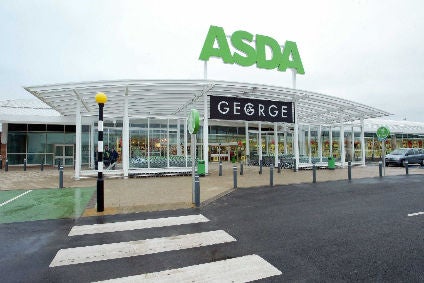
Children’s clothing is among the key areas to be considered by UK Government watchdog CMA in its in-depth investigation into the proposed merger between supermarkets Asda and Sainsbury’s.
In its ‘Issues Statement’ today (18 October), the Competition and Markets Authority (CMA) set out the areas it expects to scrutinise, at both a local and national level, as part of its ‘Phase 2’ investigation into the potential deal. These include groceries, bought both in-store and online; fuel; and other items such as toys, small electricals, and children’s clothing.
The retail groups first confirmed plans to merge in April of this year. The deal, should it go ahead, would give the companies a bigger market share than Tesco and create one of the UK’s leading grocery, general merchandise and clothing retail chains, with combined revenues of GBP51bn (US$70.1bn) in 2017.
With more than 8m customers regularly buying its Tu clothing, Sainsbury’s is the sixth largest clothing retailer by volume in the UK. It hails a “strong” position in both the womenswear and childrenswear markets and says there are opportunities for future growth in menswear, which now accounts for 15% of clothing sales and is the retailer’s fastest growing clothing category.
If coupled with Asda’s successful George clothing line, the combined business could stand as a competitor to the likes of UK value clothing retailers such as Primark.
The merger, however, needs to be approved by the competition regulator and has already seen the CEO’s of both Sainsbury’s and Asda grilled by MPs with the two UK supermarket chains told the cost of the deal will likely end up falling on the groups’ suppliers.

US Tariffs are shifting - will you react or anticipate?
Don’t let policy changes catch you off guard. Stay proactive with real-time data and expert analysis.
By GlobalDataIn August, the CMA opened its initial (Phase 1) investigation into the merger and announced the companies had requested a ‘fast-track’ referral to Phase 2. This was approved last month with the CMA confirming the deal raises “sufficient concerns” to be referred for a more in-depth investigation.
Now, the CMA says it will assess whether the merger could lead to a worse outcome for shoppers through higher prices, a poorer shopping experience, or reductions in the range or quality of products offered.
The level and impact of competition presented by newer or growing retailers – including Aldi and Lidl – will also be considered as well as whether the merger could make it easier for supermarkets to align their commercial decision-making, leading to less vigorous competition. In addition, the CMA will examine any potential efficiencies that might result from the merger and whether such savings might be passed on to shoppers.
The watchdog will also look at whether the merged company could use its increased buyer power to squeeze suppliers and if this could have a potential knock-on effect for shoppers. This would be due to suppliers being less able to innovate or having to charge higher prices to other stores that compete with the merger.
“Millions of people shop at Asda and Sainsbury’s every week, so it is essential we carry out a thorough investigation into their proposed merger,” says Stuart McIntosh, chair of the independent inquiry group carrying out the investigation. “Our job is to find out whether the merger will result in people paying more or being faced with less choice or a poorer quality shopping experience.”
The CMA expects to gather a wide range of evidence to explore these issues, which will include surveying Asda and Sainsbury’s shoppers – both in-store and online – and drivers who fill up their tanks at either company’s petrol stations. It will also be scrutinising extensive internal information from Sainsbury’s and Asda, and seeking the views of rival retailers and suppliers.
The CMA expects to issue its provisional findings early next year, ahead of the statutory deadline for its final decision on 5 March 2019.



